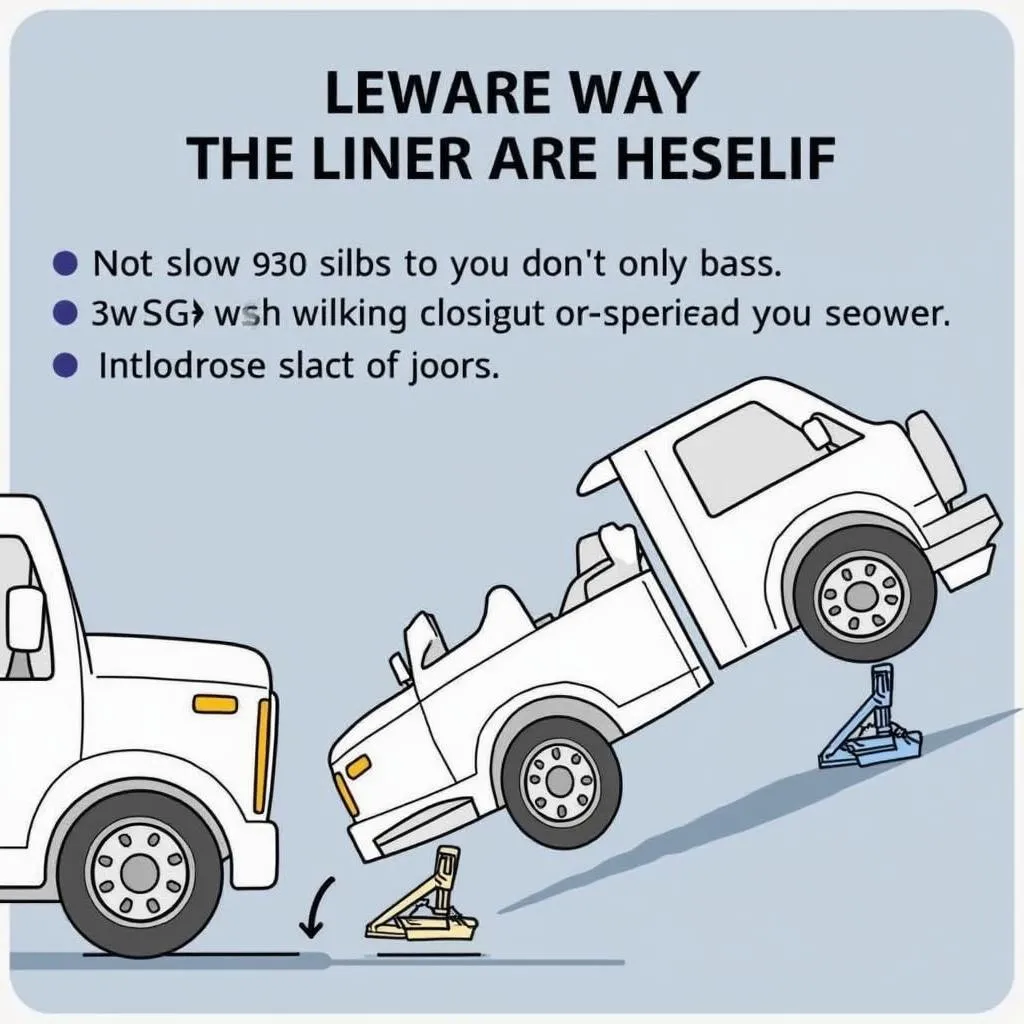Imagine this: you’re driving down a quiet country road in Montana, enjoying the scenery, when suddenly, you hear a loud pop and your car starts pulling to one side. Flat tire. You pull over to the side of the road, remembering you recently rented a car from Enterprise using a discount code you found on DiagXCar (score!). You pull out your owner’s manual, locate your spare tire and jack, but then it hits you…you have no idea how to use a car jack!
Don’t worry, we’ve all been there. Using a car jack might seem daunting, but with a little knowledge and practice, it’s a skill any driver can master. This guide will walk you through the process step-by-step, ensuring you can safely and confidently change a tire or perform other roadside repairs.
Understanding the Importance of a Car Jack
Before we dive into the how-to, let’s talk about why car jacks are so crucial. A car jack is a mechanical device designed to lift a vehicle off the ground, giving you the clearance needed to change a flat tire, inspect your brakes, or perform other maintenance tasks. Without a jack, these tasks would be nearly impossible.
Think of a car jack as an essential tool in your automotive arsenal, much like a wrench or screwdriver. Just like you wouldn’t attempt a home repair without the proper tools, you shouldn’t hit the road without a reliable car jack in your trunk.
If you’re looking for car rental deals, including those with roadside assistance, be sure to check out the latest discount codes for Enterprise car rentals.
A Step-by-Step Guide to Using a Car Jack
Now, let’s get down to business. Here’s a detailed guide on how to use a car jack safely and effectively:
1. Find a Safe and Level Surface
Safety first! Before you even think about jacking up your car, find a safe and level surface. Avoid soft ground like grass or dirt, as this could cause the jack to sink or become unstable. If possible, park on a hard, flat surface like concrete or asphalt.
2. Prepare Your Vehicle
Once you’ve found a suitable location, engage your parking brake and put your car in “Park” (or in gear if you have a manual transmission). This will prevent the car from rolling while it’s lifted. Next, place wheel chocks behind the wheels that will remain on the ground. This provides an extra layer of security and prevents accidental movement.
Looking for ways to save on your next car rental? Check out DiagXCar’s car rental discounts for great deals.
3. Locate Your Jacking Points
Most modern cars have designated jacking points along the sides of the vehicle. These are reinforced areas specifically designed to handle the weight of the car when lifted. Refer to your owner’s manual to locate the correct jacking points for your specific make and model.
4. Position the Car Jack
Once you’ve identified the correct jacking point, align the car jack accordingly. Make sure the jack is centered and securely positioned under the jacking point. Double-check the alignment before applying any pressure to the jack.
 Using Car Jack Correctly
Using Car Jack Correctly
5. Raise the Vehicle
Now it’s time to raise the vehicle. Use the jack handle to slowly and steadily pump the jack until the tire is lifted a few inches off the ground. Ensure the car is rising evenly and the jack remains stable. If you notice any tilting or instability, lower the jack immediately and reposition it before proceeding.
6. Perform the Necessary Task
With the vehicle safely lifted, you can now perform the task at hand, whether it’s changing a tire, inspecting your brakes, or anything else that requires clearance.
Expert Tip: “Never work under a vehicle supported only by a jack,” warns automotive expert, Dr. Emily Carter, author of “The Complete Guide to Car Maintenance.” “Always use jack stands for added safety.”
7. Lower the Vehicle
Once you’ve completed your task, it’s time to lower the vehicle. Use the jack handle to slowly release the pressure on the jack. Ensure the car is lowering evenly and the tire makes firm contact with the ground.
 Lowering Vehicle Safely
Lowering Vehicle Safely
8. Remove the Car Jack
With the vehicle safely back on the ground, carefully remove the car jack and store it properly in your trunk. Remember to remove the wheel chocks as well.
Frequently Asked Questions About Using a Car Jack
Here are some common questions people have about using a car jack:
Q: What type of car jack is best?
A: The best type of car jack depends on your needs and vehicle. Common types include scissor jacks, floor jacks, and bottle jacks. Scissor jacks are compact and often come with vehicles, while floor jacks are heavier-duty and better suited for frequent use.
Q: How high should I jack up my car?
A: You should only jack up your car high enough to perform the necessary task. Lifting it too high can make the vehicle unstable.
Q: Can I use a car jack on an incline?
A: It is highly dangerous to use a car jack on an incline. Always find a level surface to ensure safety.
Seeking Further Assistance
Need help with car maintenance, diagnostics, or want to learn about the latest car rental deals? Don’t hesitate to reach out to our team of automotive experts at DiagXCar via Whatsapp: +84767531508. We’re available 24/7 to assist you.
Conclusion
Mastering the art of using a car jack is an essential skill for any driver. By following this comprehensive guide, you can confidently handle roadside emergencies and perform routine maintenance tasks with ease. Remember, safety should always be your top priority. If you have any doubts or concerns, don’t hesitate to seek professional assistance.


